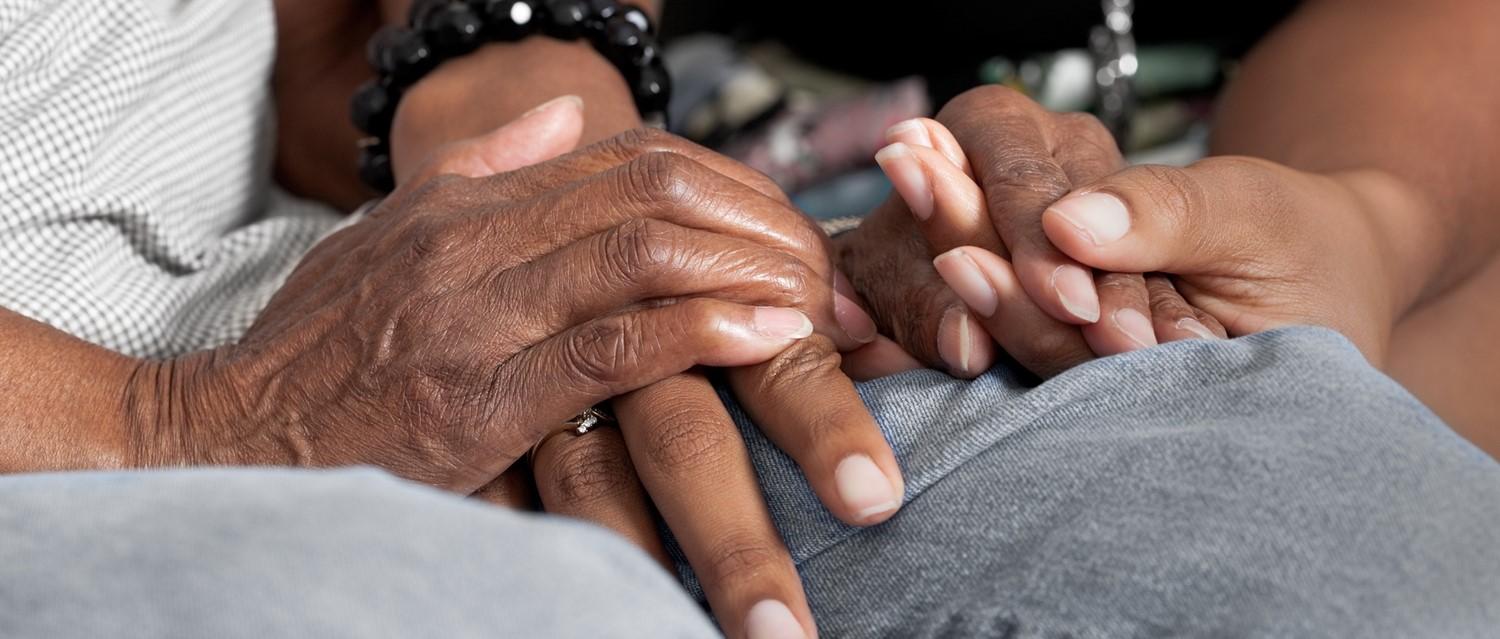
Coronavirus: what are asymptomatic and mild COVID-19?
Peer reviewed by Dr Colin Tidy, MRCGPLast updated by Dr Sarah Jarvis MBE, FRCGPLast updated 1 Dec 2021
Meets Patient’s editorial guidelines
- DownloadDownload
- Share
- Language
- Discussion
As the coronavirus pandemic continues, we're learning more about how different groups experience COVID-19. Everyone is talking about mild, moderate and severe cases, and critical cases. What does this mean?
In this article:
There are, as yet, no clear guides for patients to tell them what doctors mean by mild, moderate or severe COVID-19. Some guidance on classifying COVID-19 is appearing in research papers and epidemiological reports, but it's not very specific. For example, the broad definition of mild COVID-19 seems to be that it's worse than mild disease but not severe.
Continue reading below
How have people been 'classifying' COVID-19?
You will have heard in public health announcements and in the media that some people have had mild COVID-19 infections, and others moderate, severe or critical.
Yet, when you look up COVID-19 symptoms, you are told to expect a cough, a temperature and a loss of (or change to) your sense of smell and/or taste. How bad a cough is a mild case? How much of a temperature is severe?
The terms generally used to classify COVID-19 are:
Asymptomatic
Mild
Moderate
Severe
Critical
In the absence of formal, agreed guidance on what we call mild, moderate and severe cases of COVID-19, these classifications are consistent with published descriptions so far. Each of these 'levels' of illness is considerably less common than the previous one (so severe is less common than moderate, which is less common than mild and so on).
In this article we will look at asymptomatic and mild COVID-19. In part two of the series we explain moderate, severe and critical COVID-19.
Who gets what?
In the early stages of the COVID-19 vaccination programme, vaccination offered excellent protection against infection with COVID-19, as well as against severe illness or death. Since the Delta variant has become the dominant strain in the UK, the level of protection against infection has been less marked. However, vaccination still offers excellent protection against severe illness, and vaccinated people are still significantly less likely to become infected - noted even in June and July 2021, when almost all infections were with the Delta variant.
People who have been vaccinated are also less likely to have symptoms and less likely to have a high 'viral load' compared to those who have not had a vaccine.
Most people who are young and healthy are likely to be in group one or two (asymptomatic or mild). However, some young healthy people have become very unwell and some have died. In percentage terms this appears to be very low, but the chance is not zero. Pregnant women in the last trimester of pregnancy are particularly likely to become severely ill if they have not been vaccinated.
You have a greater chance of moving further down the list into moderate, severe and critical infections if:
You haven't been vaccinated.
You are over 60 (and higher still if you are over 70) - the risks increase with increasing age, regardless of how healthy you are; or
You have another medical condition which means you have been advised to shield.
To a lesser extent, if you have a medical condition which makes you clinically vulnerable; or
You are of BAME origin (some of the increased likelihood of people of BAME origin being severely affected appears to relate to their likelihood of having underlying medical conditions, working in public-facing jobs, living in more crowded conditions etc).
Remember, each of the 'levels' of illness is considerably less common than the previous one.
Even in the over-80s group, very significantly more people will have mild or moderate COVID-19 than severe COVID-19.
Continue reading below
Not an exact science
You may well not fit any one classification exactly. You may be between two. You may move from mild to moderate COVID-19 symptoms, then back to mild. You may have symptoms from more than one group. Illness is like that.
When huge numbers of people are affected, they will not all fit perfectly into simple group classifications of mild, moderate or severe. But if you have predominantly mild symptoms of COVID with, say, one or two moderate features, you may be 'mild to moderate'.
If your COVID-19 symptoms are predominantly moderate, but you are clearly getting worse and start to get symptoms that seem to fit 'severe', do not wait to seek urgent help until you have more of the severe COVID-19 symptoms.
In each category most people will not progress to the next. You are more likely to progress if you are vulnerable, particularly if you are over 60. If you are in the very vulnerable group and you think you have even mild COVID-19, you should seek advice.
How bad is my COVID-19?
Asymptomatic COVID-19
The government guidelines suggest that 1 in 3 people who have COVID-19 are asymptomatic. It seems that this occurs more often in the healthiest and the younger age groups, including most children.
Having asymptomatic COVID-19 means that you have no symptoms. If you live in a house with people with a COVID-19 infection and you have no symptoms, you may be an asymptomatic case. However, recent research suggests that the proportion of people who remain completely asymptomatic is lower than first thought, at about 1 in 5 people.
And while people with asymptomatic COVID-19 are less likely than those with symptoms to spread the disease, the risk is by no means non-existent. This is why self-isolating for the whole 10-day period from your last contact with someone with known infection is so important.
Remember, this entire pandemic probably started with one case. Don't be a spreader.
Mild COVID-19
The virus affects mainly your upper respiratory tract, primarily the large airways. Mild symptoms of COVID are temperature, a new, continuous cough and/or a loss of your sense of smell or taste.
Patients with mild illness have flu-like symptoms. These may include dry cough and mild fever, but the fever may not reach 37.8°C, and there may sometimes be little or even no cough. Patients might notice a feeling of being a bit more breathless than normal on exercise, but they are not out of breath on normal household activity.
With mild COVID-19:
You may have a fever, including one that doesn't reach the 37.8°C mark.
You may lose your sense of smell or taste.
You may have tiredness, muscles aches or a headache.
You are not highly likely to have sore throat or runny nose, but they do occur in some cases.
You do not have marked breathlessness.
Your self-care, cooking, eating and drinking are not affected. Your appetite is normal or fairly normal.
You may feel sad or weepy.
The symptoms typically seem to last about 7-10 days.
Most normally healthy people under 60 who have symptoms will have this form.
Most (81%) of symptomatic COVID-19 cases are mild and remain mild in severity. This is more likely if you're vaccinated, or if you're young and otherwise healthy. However, patients with mild disease can deteriorate, sometimes quickly, and this is more likely in at-risk groups.
In part two of this feature series we will look into moderate, severe and critical infections.
Continue reading below
When to seek help for COVID-19
If you think you may have COVID-19 or that you have been exposed to the virus, you should stay at home, self-isolate and book a PCR COVID-19 test as soon as possible. Do not stop self-isolating until:
You have a negative test result; or
If your test is positive, you have self-isolated for at least 10 days from when your symptoms began. If you remain generally unwell, continue to self-isolate after this.
The vast majority of people with mild or asymptomatic COVID-19 do not need to seek medical attention and can treat their mild symptoms of COVID at home. There are some circumstances in which you should speak with a clinician about your symptoms. However, do not simply show up at your GP surgery or a pharmacy, as you risk spreading the virus to others. Instead, call first and ask for advice.
If you are in a vulnerable group, seek advice. This includes all people who were classified as 'clinically extremely vulnerable' and were advised to shield for their own protection in the early stages of the pandemic.
You should seek medical advice (over the phone) if you develop symptoms of COVID-19 and you:
Are over 70 (not all over-70s are in the clinically extremely vulnerable category, but you are at increased risk of serious disease).
Have significant heart, lung or kidney disease, or immune deficiency.
Are on oral steroids.
Have had a solid organ transplant.
Are invited every year for an NHS flu vaccination because of your own medical condition (this does not apply if you are offered a flu vaccination because you are a carer and does not apply to children).
COVID-19 can worsen swiftly. Vulnerable people should not manage their COVID-19 alone by relying on written advice. Written advice cannot check up on you. Government advice is constantly updated. Click here for additional advice for the shielding and extremely vulnerable people.
If you have symptoms that are worsening, seek advice. This is particularly true if you have any of the severe features. People with COVID-19, particularly those in risk groups, can deteriorate from mild to moderate to severe. Likewise, if you are afraid, please seek advice. That is what health professionals are there for.
You may have to call NHS 111 (or the relevant number in your region) and wait to speak with a nurse. You can also use NHS 111's online tool to find out what to do next if you think you have COVID-19. In an emergency, call 999 and ask for an ambulance. Inform the call handler that you think you have coronavirus.
Part two of this series explains moderate, severe and critical COVID-19 infections. You can follow Patient on Twitter and Facebook for future articles.
Dr Mary Lowth is an author or the original author of this leaflet.
Patient picks for General information

COVID-19
How to contribute to COVID-19 research
COVID-19 has been such a large part of our lives for so long that it's easy to forget it's a very new virus, and there is still a great deal to learn about it. To do that, the science community relies on members of the public - those who have had coronavirus and those who haven't - to sign up as research volunteers.
by Allie Anderson

COVID-19
How has COVID-19 impacted cancer patients?
Coronavirus has caused an unprecedented health crisis in the UK. As well as the need to treat and prevent the illness itself, the demand placed on the NHS, and the anxiety created in the general public, there has been an impact on the treatment of other diseases such as cancer.
by Gillian Harvey
Continue reading below
Article history
The information on this page is peer reviewed by qualified clinicians.
1 Dec 2021 | Latest version

Ask, share, connect.
Browse discussions, ask questions, and share experiences across hundreds of health topics.

Feeling unwell?
Assess your symptoms online for free
Sign up to the Patient newsletter
Your weekly dose of clear, trustworthy health advice - written to help you feel informed, confident and in control.
By subscribing you accept our Privacy Policy. You can unsubscribe at any time. We never sell your data.